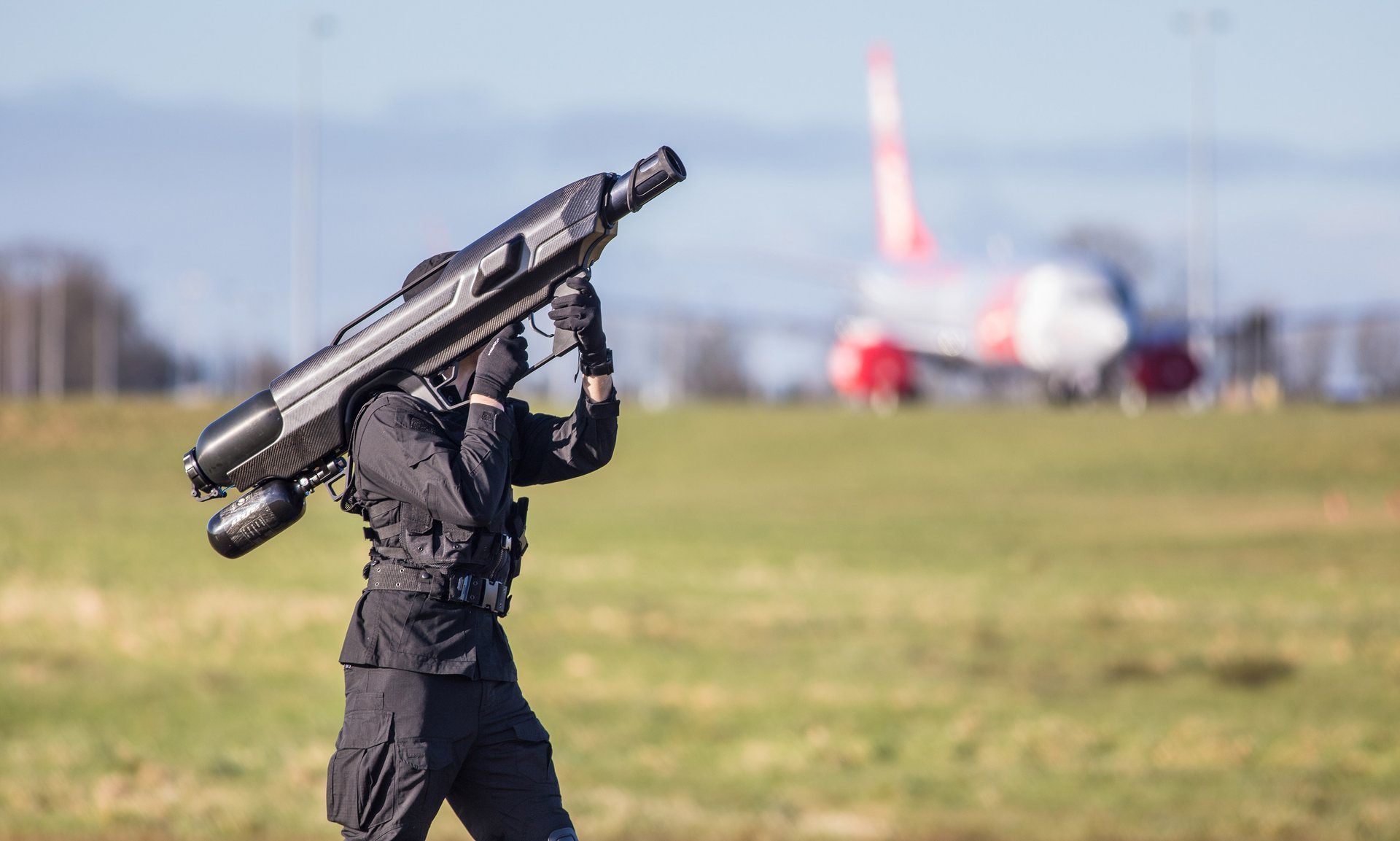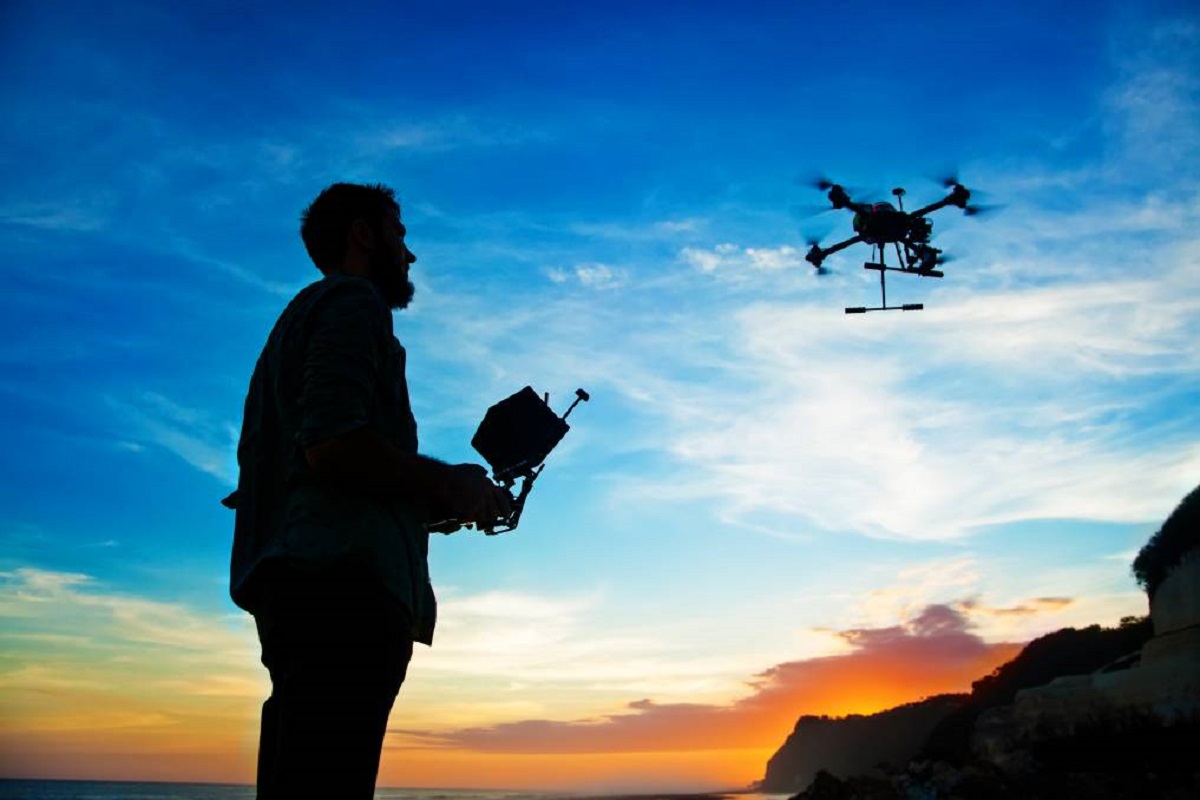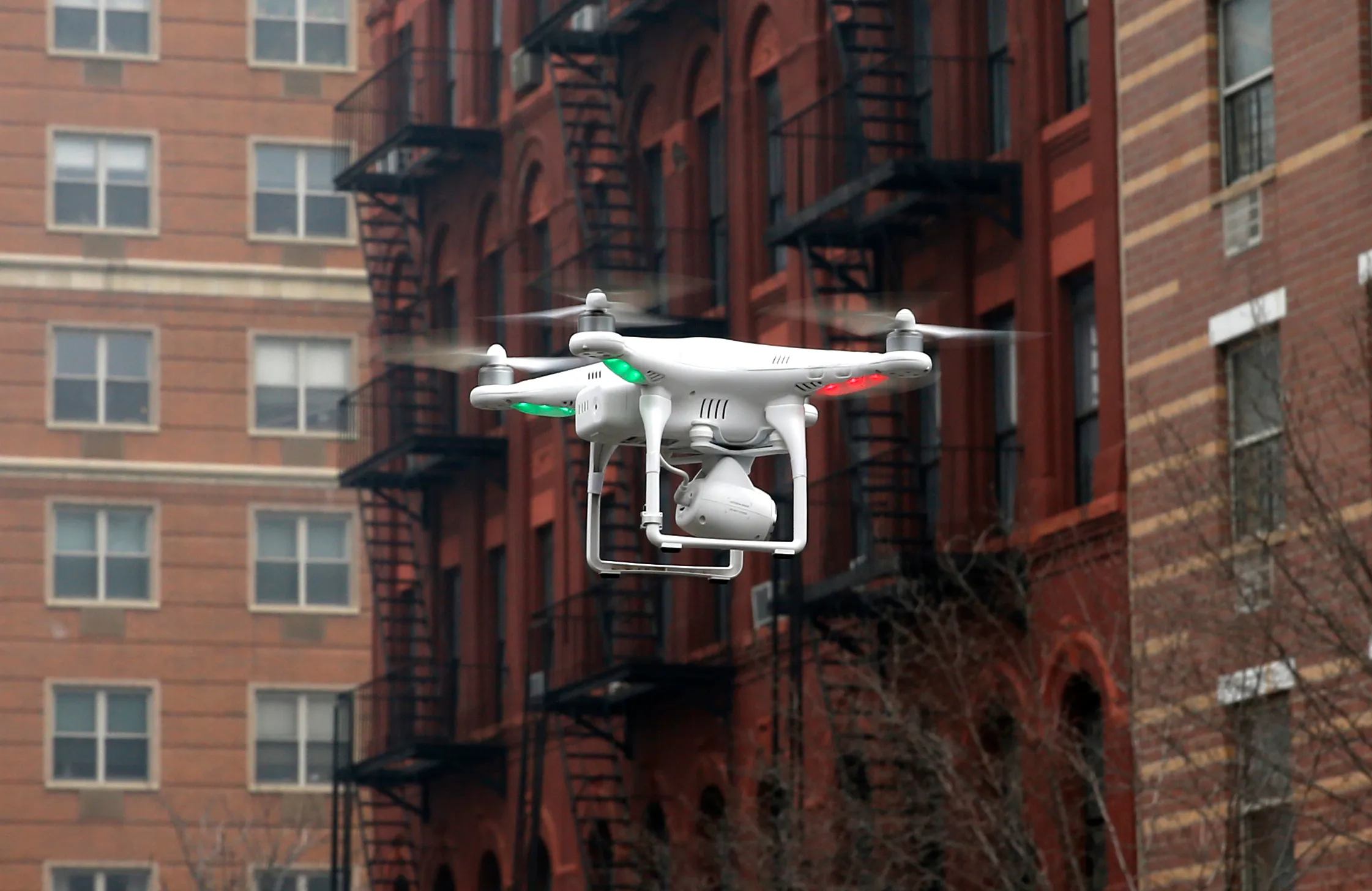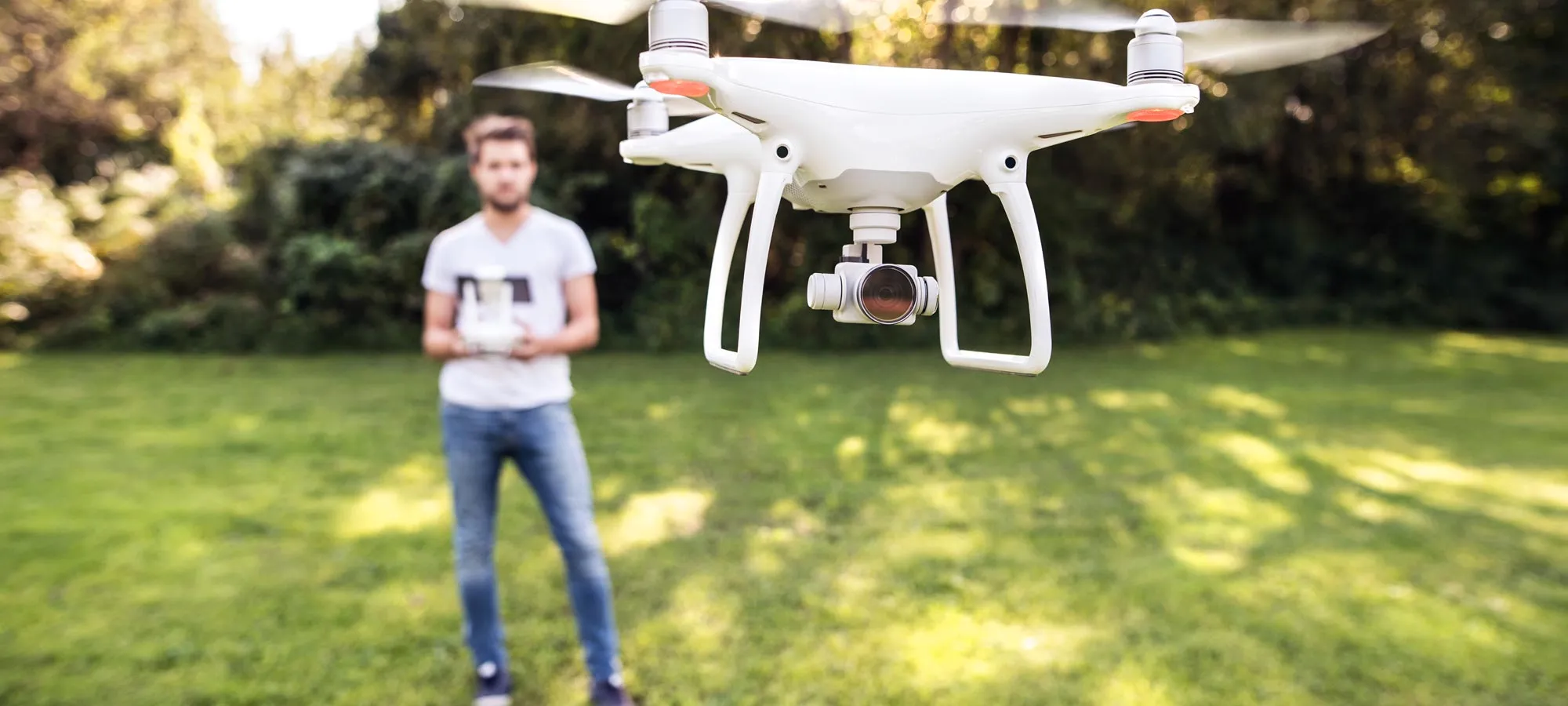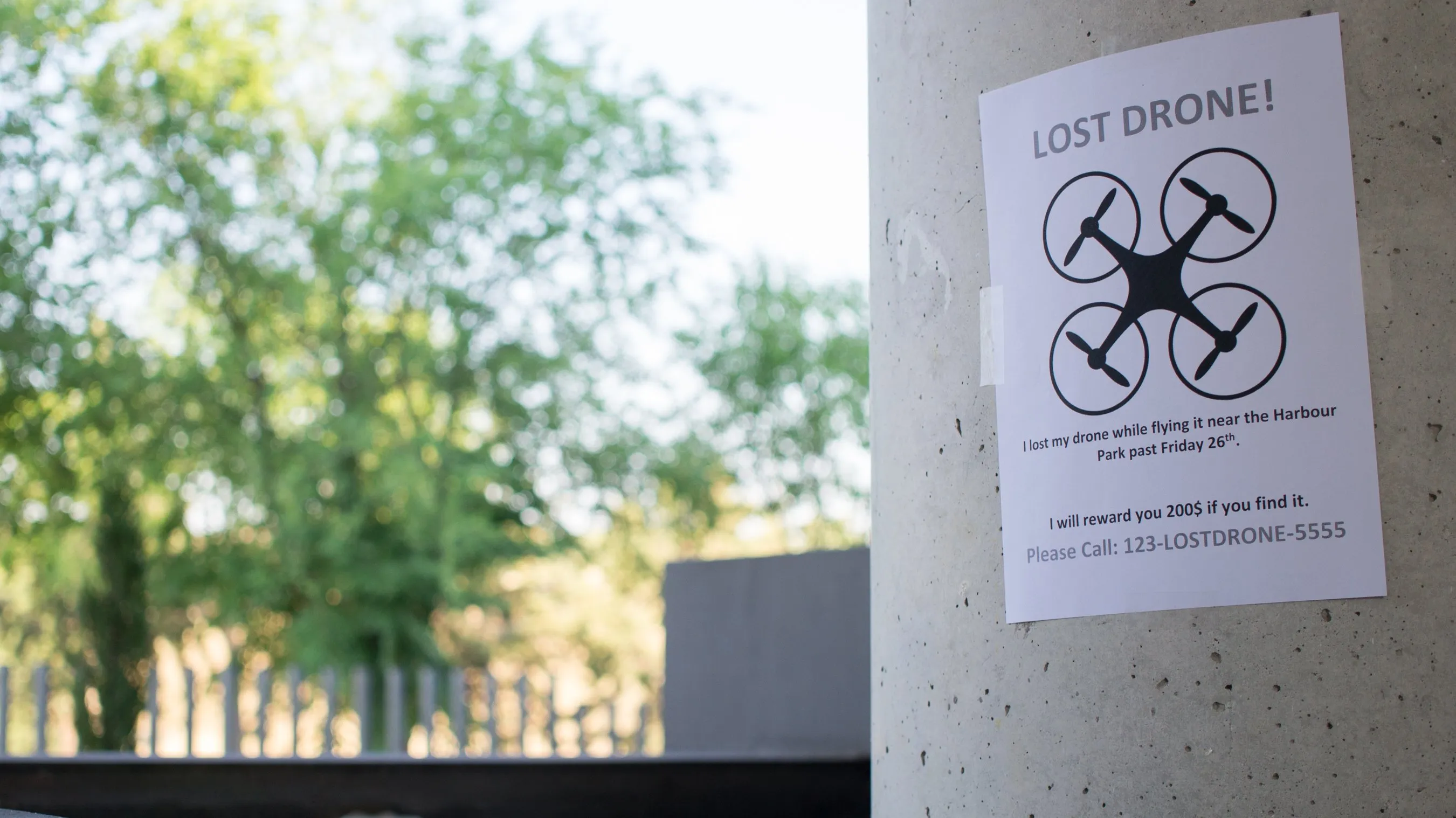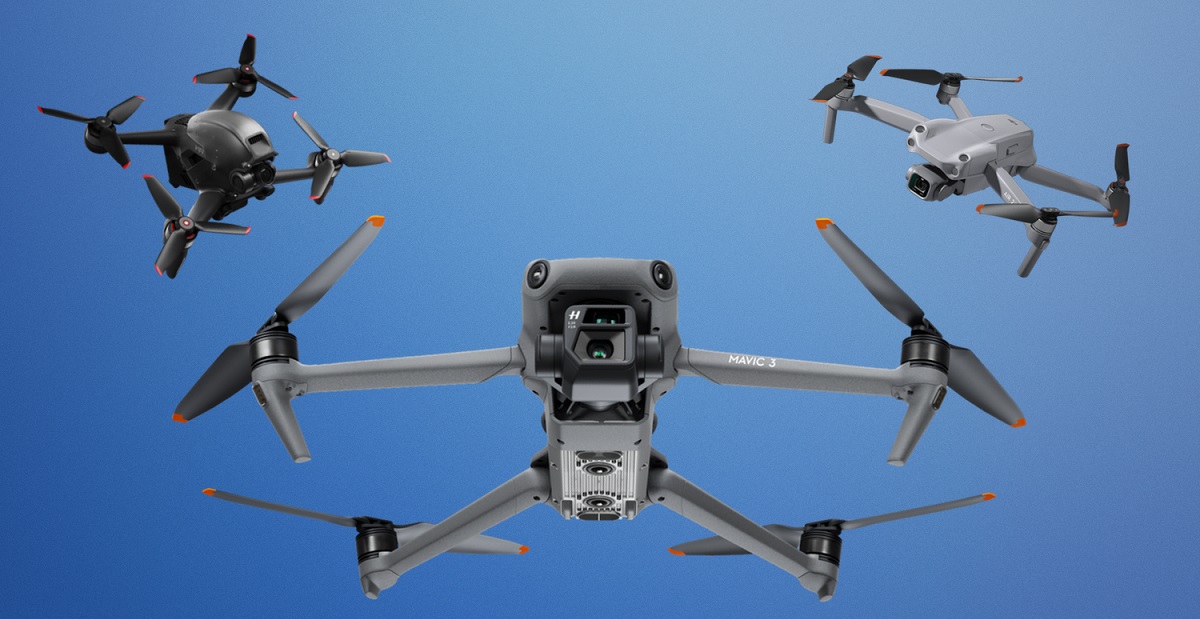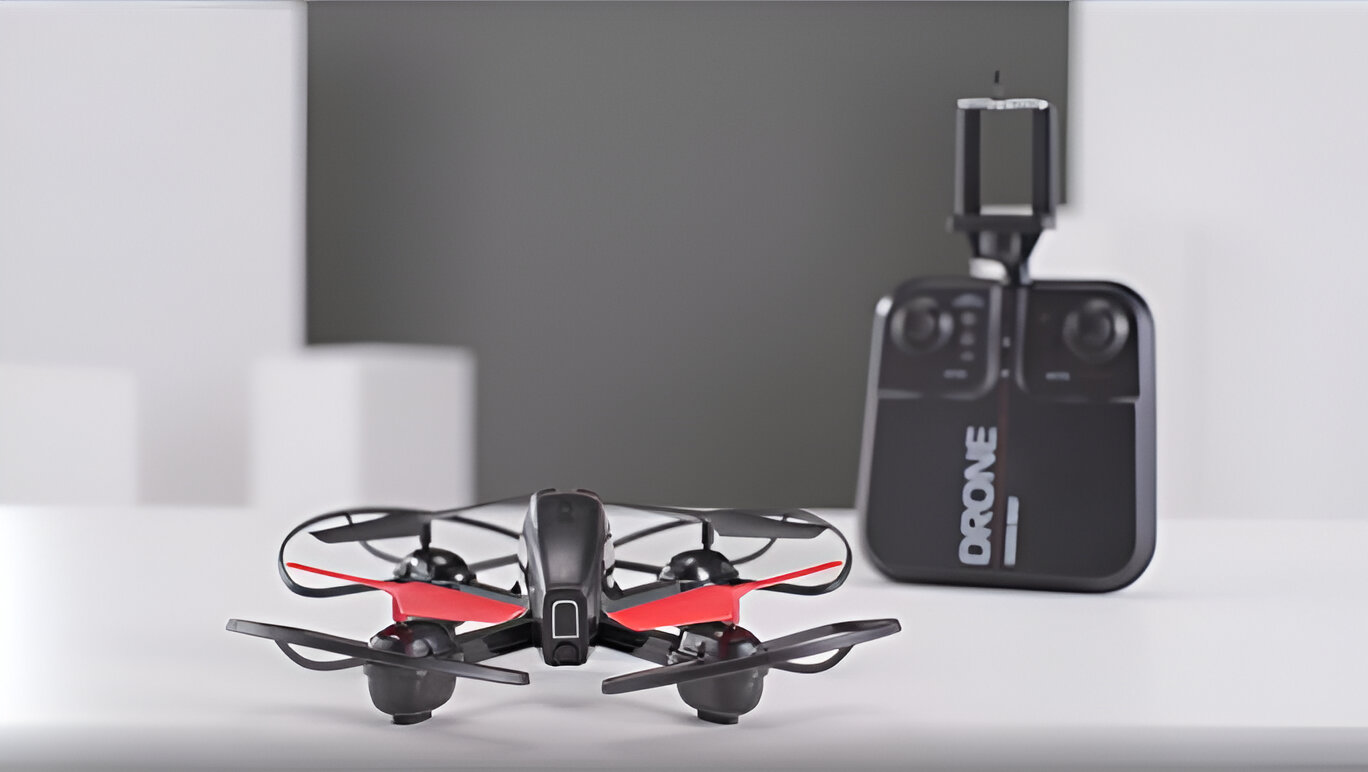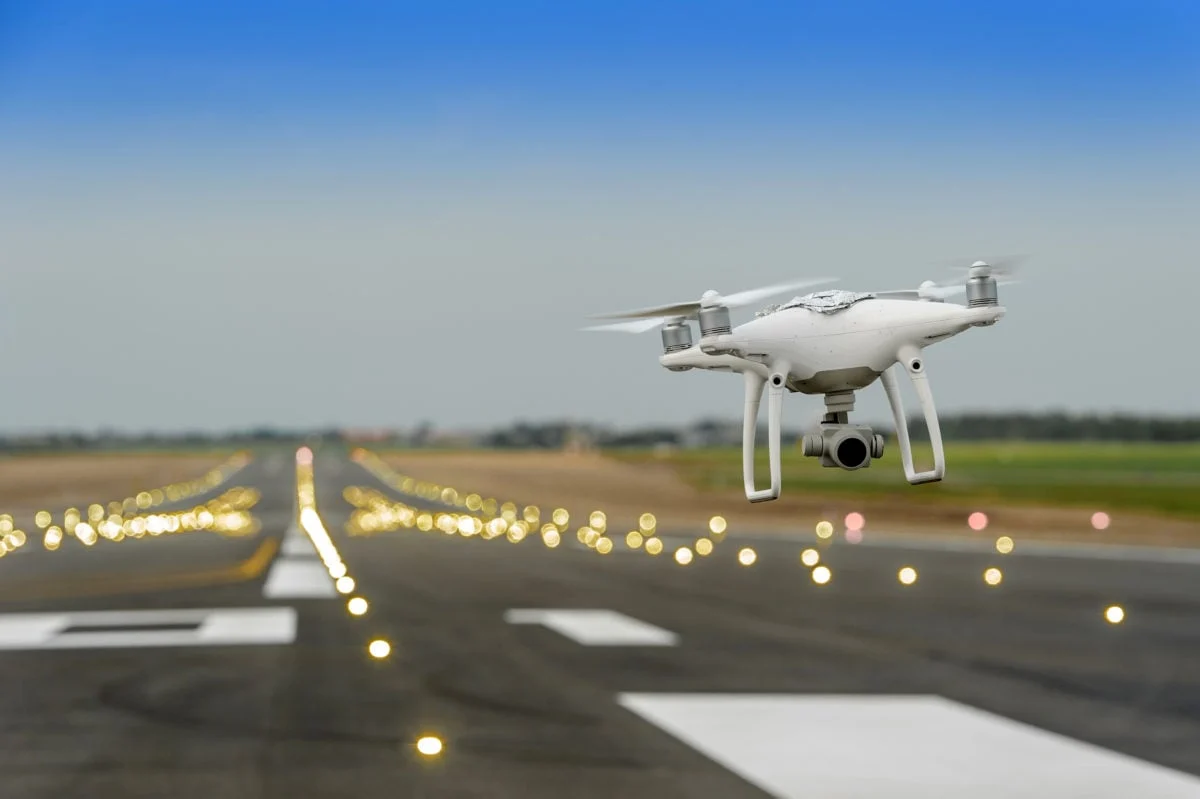Introduction
Drones have become a ubiquitous presence in our modern world. Also known as unmanned aerial vehicles (UAVs), drones are revolutionizing various industries and capturing the imagination of both hobbyists and professionals alike. These small, remotely operated aircraft have gained popularity for their versatility, range of applications, and potential to reshape industries across the globe.
In recent years, drones have transitioned from military use to being widely available to the general public. They have become a common sight in the skies, whether capturing breathtaking aerial photographs and videos, delivering packages, or assisting in search and rescue missions. But what exactly is a drone, and how does it work?
This article aims to explore the fascinating world of drones, providing an overview of their history, types, components, workings, uses, benefits, drawbacks, regulations, and future developments. Whether you’re a drone enthusiast or simply curious about these remarkable technological devices, this article will provide valuable insights into the world of drones.
By understanding the underlying technology and applications of drones, readers will gain a comprehensive perspective on the impact these unmanned vehicles have on various industries and their potential for future advancements. Let’s embark on a journey to discover the captivating world of drones and explore the infinite possibilities that they offer.
What is a Drone?
A drone, also known as an unmanned aerial vehicle (UAV), is an aircraft that operates without a human pilot onboard. It is controlled either autonomously by computers or remotely by a human operator on the ground. Drones come in a variety of shapes and sizes, from small handheld devices to larger, more sophisticated aircraft.
One of the distinguishing features of drones is their ability to fly and maneuver through the air. They are equipped with multiple rotors or propellers that generate lift and propulsion, allowing them to hover, take off, land, and navigate within different environments. Drones are also equipped with a range of sensors, cameras, and other payloads that enable various functionalities depending on their intended use.
Drones are powered by batteries or fuel engines, depending on the size and purpose. They are designed to be lightweight, agile, and maneuverable, allowing them to access areas that are difficult, dangerous, or inaccessible for traditional manned aircraft. These technological advancements have opened up a wide range of applications and have made drones invaluable tools in numerous industries.
While drones were initially developed for military purposes, their applications have expanded to commercial, recreational, scientific, and humanitarian sectors. Today, drones are being utilized in industries such as agriculture, photography and videography, infrastructure inspection, delivery services, environmental monitoring, search and rescue operations, and many others.
The versatility of drones makes them an indispensable tool for tasks that require aerial surveillance, data collection, or transportation in a cost-effective and efficient manner. They are capable of capturing high-resolution images and videos, collecting real-time data, and carrying payloads for delivery purposes. The flexibility and accessibility of drones have significantly impacted various sectors, offering innovative solutions to existing challenges.
In the next sections, we will dive deeper into the history of drones, explore their different types, examine the components that make up a drone, understand how they work, and discover their multitude of uses in various industries. So, let’s continue our journey into the fascinating world of drones.
History of Drones
The history of drones can be traced back to the early 20th century, with technological advancements and the need for unmanned aerial vehicles for military purposes. The concept of drones began with the development of remote-controlled aircraft, which were used for target practice and aerial surveillance during World War I and World War II.
However, it was not until the 1980s that drones started to play a significant role in military operations. The Israeli military utilized drones for surveillance and intelligence gathering in conflicts, showcasing their tactical advantages without endangering human lives. This prompted other countries to invest in drone technology for military applications.
In the 2000s, with advancements in microelectronics, sensors, and communication systems, drones began to transition from being exclusively military tools to becoming more accessible to the general public. The availability of affordable components and the development of user-friendly remote control systems led to the rise of consumer drones.
Consumer drones gained popularity around 2010 with the release of the DJI Phantom, a compact and versatile drone equipped with high-definition cameras. This marked a turning point in the drone industry, as it opened up opportunities for enthusiasts, photographers, and videographers to capture breathtaking aerial imagery at an affordable price.
Simultaneously, various industries recognized the potential of drones for their specific needs. In agriculture, drones were employed for crop monitoring, irrigation management, and pesticide application. In the construction industry, drones aided in surveying, mapping, and site inspections. Emergency services began utilizing drones for search and rescue operations, monitoring wildfires, and assessing disaster-stricken areas.
In recent years, drones have gained immense popularity among hobbyists, sparking a new wave of recreational pilots who embrace the thrill of flying and capturing stunning aerial footage. The increasing demand and advancements in drone technologies have compelled manufacturers to continuously improve drone capabilities, including longer flight times, better cameras, obstacle avoidance systems, and increased stability.
The history of drones has witnessed their evolution from military tools to becoming a mainstream technology accessible to various industries and the general public. The future of drones holds great potential, with ongoing advancements in artificial intelligence, robotics, and connectivity, paving the way for more autonomous and innovative applications. So, let’s delve deeper into the different types of drones and explore their capabilities in the next section.
Types of Drones
Drones come in various types, each designed for specific applications and functionalities. Understanding the different types of drones can help identify which one is best suited for a particular task. Let’s explore some of the most common types of drones:
- Quadcopters: Quadcopters are one of the most popular types of drones. As the name suggests, they are equipped with four rotors that provide stability and maneuverability. Quadcopters are versatile, compact, and often used for aerial photography, videography, and recreational flying due to their ease of control and stability in flight.
- Fixed-Wing Drones: Unlike quadcopters, fixed-wing drones have a design similar to traditional airplanes. They have a fixed wing and a propeller for forward propulsion. Fixed-wing drones are known for their long flight endurance and are commonly used in mapping, surveying, and surveillance applications that require covering large areas.
- Multirotor Drones: Multirotor drones refer to drones with more than four rotors. These types of drones vary in the number of rotors they have, such as hexacopters (six rotors) and octocopters (eight rotors). Multirotor drones are preferred for heavy payload lifting, industrial inspections, and search and rescue missions due to their increased stability and lifting capacity.
- Nano Drones: Nano drones are the smallest and most compact drones available. They are often palm-sized or even smaller. These drones are highly maneuverable and used for indoor flying, recreational purposes, and in situations where stealth and agility are required, such as surveillance operations in tight spaces.
- Hybrid Drones: Hybrid drones combine the features of fixed-wing and multirotor drones. They have the ability to take off and land vertically like a multirotor and transition to horizontal flight like a fixed-wing drone. These drones offer the advantages of both types, allowing for long-range flights and vertical takeoffs and landings, making them ideal for various applications, including aerial mapping and surveillance.
These are just a few examples of the many types of drones available. Each type has its own strengths and weaknesses, making them suitable for specific tasks and applications. Various industries, including photography, filmmaking, agriculture, delivery services, and more, utilize different types of drones to meet their specific needs. As drone technology continues to advance, we can expect to see even more specialized types of drones catering to unique requirements in the future.
Components of a Drone
To understand how drones work, it’s important to familiarize ourselves with their various components. Drones are sophisticated machines comprised of several key elements that work in harmony to ensure their smooth operation. Let’s take a closer look at some of the essential components of a drone:
- Frame: The frame forms the structure of the drone and provides the necessary support for all other components. Frames are typically made of lightweight materials such as carbon fiber or aluminum to maintain durability while minimizing weight.
- Motor and Propellers: Drones are equipped with multiple motors and propellers that generate lift and propulsion. The number of motors and propellers depends on the type of drone. They work together to provide stability and control during flight.
- Flight Controller: The flight controller is the brain of the drone. It processes data from various sensors and provides instructions to the motors, determining the drone’s flight path, stability, and response to control inputs.
- Battery: Drones are powered by a rechargeable battery, usually a lithium polymer (LiPo) battery. The battery supplies the necessary electrical energy to the motors, flight controller, and other components to keep the drone in flight.
- Sensors: Drones are equipped with a variety of sensors that provide vital information to the flight controller. These include accelerometers, gyroscopes, magnetometers, barometers, and GPS modules. Sensors help the drone maintain stability, altitude, position, and orientation.
- Camera and Gimbal: Many drones are equipped with cameras to capture aerial photos and videos. The camera is mounted on a gimbal, a device that stabilizes the camera and allows it to maintain a steady position even during the drone’s movements. This enables the capture of high-quality, shake-free footage.
- Transmitter and Receiver: Drones are controlled remotely using a transmitter and receiver system. The transmitter, held by the pilot, sends control signals to the drone’s receiver, which interprets the commands and relays them to the flight controller, allowing the pilot to maneuver the drone.
- Telemetry System: Drones are often equipped with a telemetry system that provides real-time data and feedback to the pilot. This includes information on battery voltage, GPS coordinates, altitude, speed, and other flight parameters, giving the pilot valuable insights during flight.
- Propeller Guards and Landing Gear: Some drones come with propeller guards and landing gear. Propeller guards protect the propellers from collisions, while landing gear ensures a safe landing and protects the drone’s delicate components.
These are just a few of the key components that make up a drone. The integration and functionality of these components, combined with advanced software and algorithms, allow drones to perform a wide range of tasks and applications. Understanding how these components work together is crucial for drone operators and enthusiasts interested in getting the most out of their drones.
How Do Drones Work?
Drones operate based on a combination of technology, sensors, and controls that allow them to fly in a controlled and precise manner. Understanding how drones work is essential for pilots and enthusiasts to operate them safely and effectively. Here is an overview of the basic principles behind drone operation:
Flight Control: Drones are controlled through a flight controller, which acts as the brain of the aircraft. The flight controller receives input from the pilot’s commands and the onboard sensors, and it adjusts the speed of the motors and the position of the control surfaces to maintain stability and control during flight.
Stabilization Systems: Drones utilize stabilization systems to maintain stable flight. These systems include accelerometers, gyroscopes, and magnetometers. The accelerometers measure linear acceleration, the gyroscopes measure rotation rates, and the magnetometers provide orientation based on the Earth’s magnetic field. By constantly adjusting the motor speeds and control surfaces based on the sensor data, the drone can remain level and stable even in varying environmental conditions.
GPS Navigation: Many drones are equipped with GPS (Global Positioning System) receivers, allowing them to determine their position and altitude accurately. GPS data is used by the flight controller to execute autonomous flights, maintain position hold, and return to the home location in case of signal loss or low battery.
Transmitter and Receiver: Drones are remotely controlled using a transmitter and receiver system. The pilot uses the transmitter to send control signals to the drone, including commands for throttle, pitch, roll, and yaw. The receiver on the drone interprets these signals and translates them into actions, adjusting the motor speeds and control surfaces accordingly.
Power and Propulsion: Drones are powered by batteries or, in some cases, fuel engines. The batteries or engines provide the necessary power to spin the propellers, generating thrust for lift and propulsion. The flight controller continuously adjusts the speed of the motors to maintain stability and control based on the pilot’s commands and sensor data.
Camera and Payload Integration: Many drones are equipped with cameras or other payloads for capturing photos, videos, or data. The camera is typically mounted on a gimbal to stabilize it and provide smooth footage. The pilot can control the camera remotely, adjusting its tilt, pan, and other settings to capture the desired shots.
Control Modes: Drones typically offer different control modes to cater to different pilot skill levels and flight requirements. These modes include manual control, which gives the pilot full control of the drone’s movements, and autonomous modes, where the drone can execute pre-programmed flight paths or perform specific tasks based on the onboard sensors and software.
By integrating these components and systems, drones are able to achieve stable and controlled flight, perform aerial maneuvers, and execute various tasks and applications. The advancements in drone technology continue to push the boundaries, enabling drones to operate more autonomously, efficiently, and safely than ever before.
Uses of Drones
Drones have a wide range of applications across industries, proving to be versatile tools that can revolutionize various fields. Let’s explore some of the key uses of drones:
- Aerial Photography and Videography: Drones are widely used in the photography and filmmaking industry to capture stunning aerial shots and videos. With their ability to reach high altitudes and maneuver through tight spaces, drones provide a unique perspective that was once only possible with expensive equipment like helicopters.
- Agriculture: Drones have found valuable applications in agriculture, providing farmers with valuable data and insights. They can be used for monitoring crops, assessing plant health, precision spraying of fertilizers or pesticides, and creating detailed maps of farmland, helping optimize resource allocation and increase yields.
- Infrastructure Inspection: Drones offer a safe and efficient method for inspecting infrastructure such as buildings, bridges, and power lines. They can reach inaccessible areas, capture high-resolution images and video footage, and detect potential issues like cracks, leaks, or deteriorating structures, enabling timely maintenance and reducing the need for expensive manual inspections.
- Search and Rescue: Drones play a crucial role in search and rescue operations. Equipped with cameras and thermal sensors, they can quickly cover large areas and provide real-time images and information to locate missing persons or assess disaster-stricken areas. Drones assist in reducing risks and saving valuable time in critical situations.
- Delivery Services: Companies like Amazon and other logistics providers are exploring the use of drones for delivering packages. With the ability to navigate quickly and efficiently over short distances, drones can revolutionize last-mile delivery, reducing delivery times and costs.
- Environmental Monitoring: Drones are used for environmental monitoring and conservation purposes. They can capture aerial imagery and collect data that helps researchers monitor wildlife populations, study changes in ecosystems, and assess the impact of climate change. Drones provide a non-intrusive and efficient method for gathering information in sensitive environments.
- Real Estate: Drones are employed in the real estate industry to provide aerial views of properties for sale. These aerial images and videos offer potential buyers a comprehensive view of the property and its surroundings, enhancing marketing efforts and assisting in the decision-making process.
- Emergency Response: During natural disasters or emergency situations, drones can quickly assess and map affected areas, aiding in disaster management and response efforts. They can be used for monitoring wildfires, identifying structural damage, and providing real-time situational awareness to emergency responders.
These are just a few examples of the numerous applications for drones. As technology advances and regulations evolve, the potential uses for drones are expanding across various sectors. By offering cost-effective, efficient, and innovative solutions, drones are transforming industries and reshaping the way certain tasks are accomplished. The benefits and possibilities that drones bring are immense, and their impact is expected to continue growing in the years to come.
Benefits and Drawbacks of Drones
Drones offer numerous benefits across various industries, but they also come with some drawbacks. Understanding these advantages and disadvantages is crucial for responsible drone use. Let’s explore the benefits and drawbacks of drones:
Benefits:
- Efficiency and Cost-Effectiveness: Drones can perform tasks more efficiently and at lower costs compared to traditional methods. They can cover large areas quickly, gather data in real-time, and perform repetitive tasks without the need for human intervention.
- Safety: Drones can be used in hazardous situations, reducing the risks to human life. They can access remote or dangerous areas for inspection, surveillance, or search and rescue operations without endangering human lives.
- Accessibility: Drones are becoming more affordable and user-friendly, allowing more people to experience and benefit from their capabilities. From recreational pilots to professionals in various industries, drones are accessible to a wide range of users.
- Data Collection: Drones are equipped with sensors and cameras that enable data collection in ways that were previously impossible or labor-intensive. They provide detailed imagery, aerial mapping, and real-time data streaming, which can be used for analysis, decision-making, and planning in agriculture, construction, and other sectors.
- Environmental Impact: Drones have a smaller carbon footprint compared to traditional aircraft, making them a more environmentally friendly option. They produce lower emissions and require less fuel, reducing their impact on the environment.
Drawbacks:
- Privacy Concerns: Drones equipped with cameras raise privacy concerns as they can inadvertently invade personal privacy if used irresponsibly or without consent. Stricter regulations and guidelines are being implemented to address these concerns and ensure responsible drone usage.
- Interference with Air Traffic: With the increasing popularity of drones, there is a need for careful integration into airspace to avoid conflicts with manned aircraft. Regulations and airspace management systems are being developed to minimize the risks of collisions and maintain a safe environment for all aircraft.
- Limited Battery Life and Range: Drones are limited by their battery life, which can vary depending on the size and type of drone. This restriction limits their flight time and range, requiring careful planning and consideration for longer missions or tasks.
- Regulatory Challenges: The rapid growth and evolving nature of the drone industry have posed regulatory challenges. Countries and regions are enacting regulations to ensure the responsible and safe operation of drones, but the balance between freedom and safety remains a constant challenge.
- Misuse and Security Concerns: Drones can be misused for illegal activities, posing security threats such as unauthorized surveillance, smuggling, or disruptions to public safety. Measures and countermeasures are being developed to detect, prevent, and mitigate these risks.
While drones bring undeniable benefits and potential for innovation, addressing the drawbacks and challenges associated with their use is essential for responsible integration into society. Continued efforts in regulation, education, and technological advancements will contribute to maximizing the benefits while minimizing the risks and drawbacks of drones.
Regulations and Laws for Drones
As drones become more prevalent and accessible, regulations and laws have been put in place to ensure their safe and responsible operation. These rules aim to address concerns related to privacy, airspace safety, and security. Let’s explore some of the key regulations and laws for drones:
Registration: Many countries require drone owners to register their drones before they can be flown. Registration helps authorities track and identify the owners of drones in the event of an incident or violation of regulations. It also promotes accountability and responsible ownership.
Flight Restrictions: Governments have established flight restrictions to ensure the safety and security of airspace. These restrictions may include no-fly zones, altitude limitations, and requirements to maintain a safe distance from airports, helipads, and other sensitive areas. It is crucial for drone operators to familiarize themselves with these restrictions and plan their flights accordingly.
Pilot Certification and Training: Some countries require drone pilots to obtain a certification or license to operate drones commercially or for certain purposes. These certifications ensure that pilots have the necessary knowledge and skills to fly drones safely and responsibly. Training programs and courses are available to educate drone pilots on regulations, flight procedures, and emergency situations.
Privacy Protection: Privacy concerns associated with drones have led to the formulation of specific regulations to protect individuals’ privacy rights. These regulations may include restrictions on recording or capturing images in private areas without consent. Users must be aware of local privacy laws and regulations when operating drones equipped with cameras.
Insurance Requirements: In some cases, drone pilots may be required to obtain liability insurance to cover damages or injuries that may occur during drone operations. This insurance provides an additional layer of protection and ensures that operators can compensate for any potential damages or accidents.
Labeling and Identification: Many countries require drones to be labeled with registration numbers or identification marks for easy identification. This aids authorities in tracking and identifying the owner of a drone in case of any incidents or violations.
Operational Limitations: Some regulations impose operational limitations on drones, such as maximum allowed flight altitude, distance from the pilot, and weight restrictions. These limitations are put in place to maintain the safety and stability of drones and prevent them from interfering with other aircraft or posing potential risks to people and property.
It is vital for drone operators to comply with the regulations and laws applicable to their region. Staying informed about the latest updates and changes to drone regulations helps ensure that drone operations are conducted in a responsible and legal manner. By following these rules, drone operators can mitigate risks, protect privacy rights, and contribute to the safe and sustainable integration of drones into society.
Future of Drones
The future of drones holds incredible potential as advancements in technology continue to reshape the capabilities and applications of unmanned aerial vehicles. Here are some areas where the future of drones is likely to make a significant impact:
Autonomous Operation: As artificial intelligence and machine learning continue to advance, drones are expected to become more autonomous. They will be equipped with advanced algorithms and sensors, enabling them to navigate complex environments, avoid obstacles, and make intelligent decisions without constant human input. This autonomy will unlock new possibilities for automated tasks and missions.
Delivery Services: Delivery by drones is expected to become more common in the future, revolutionizing the logistics and e-commerce industries. Companies are exploring the use of drones for fast and efficient delivery of packages, especially in urban areas where traffic congestion can hinder traditional delivery methods. The development of delivery infrastructure and technologies will be crucial in realizing the full potential of drone delivery.
Urban Air Mobility: With the rise of electric propulsion and advancements in battery technology, the concept of urban air mobility is gaining traction. Drones or electric vertical takeoff and landing (eVTOL) aircraft could be used for short-distance urban transportation, reducing congestion and offering faster commute options. As urban air mobility infrastructure develops, drones may become an integral part of the transportation ecosystem.
AI-Powered Drones: Drones equipped with artificial intelligence will have the ability to perform more complex tasks. They can analyze data in real-time, make predictive models, and detect anomalies or patterns that may not be easily identifiable by humans. AI-powered drones will find applications in various fields such as agriculture, infrastructure monitoring, and disaster management, providing more efficient and accurate solutions.
Collaborative Swarms: Swarm technology, where multiple drones work together in a coordinated manner, holds great potential. These drone swarms can collaborate on tasks such as search and rescue, surveillance, or mapping. By leveraging swarm intelligence, drones can cover larger areas, share information, and execute tasks more effectively than individual drones.
Expanded Applications: The range of applications for drones is continuously expanding. Drones may be utilized in remote sensing for environmental monitoring, scientific research, and weather forecasting. They can also assist in infrastructure maintenance, inspecting pipelines, bridges, and power lines. In the entertainment industry, drones may be used for aerial light shows and live events, creating captivating visual displays.
The future of drones is bright, with ongoing advancements in technology, regulations, and public acceptance. However, challenges remain, such as privacy concerns, airspace management, and ensuring safe integration into existing systems. Addressing these challenges coupled with ongoing innovation will shape the future of drones and enable their widespread adoption in various industries, improving efficiency, safety, and providing new opportunities for businesses and individuals alike.
Conclusion
Drones have revolutionized various industries and captured the imagination of people worldwide. From their humble beginnings as military tools to their widespread availability for commercial and recreational use, drones have transformed the way we view and interact with the world from above.
We have explored the definition and types of drones, delved into their history, and examined their components and functionality. We have also discovered the wide range of applications for drones, from aerial photography and videography to agriculture, infrastructure inspection, and emergency response.
Drones offer numerous benefits, including increased efficiency, safety, accessibility, and data collection capabilities. They have the potential to reshape industries, open up new possibilities, and provide innovative solutions to existing challenges.
However, drones also come with limitations and drawbacks, such as privacy concerns, regulatory challenges, and operational restrictions. These challenges must be addressed through responsible drone operation, adherence to regulations, and ongoing technological advancements.
As we look to the future, the potential for drones is immense. Advancements in autonomy, delivery services, urban air mobility, artificial intelligence, and collaborative swarm technology will continue to expand the capabilities and applications of drones.
It is crucial to approach the future of drones with a balanced perspective, considering the benefits and challenges they present. Continued collaboration between government entities, industries, and drone operators will help establish responsible regulations, ensure safety, and promote the sustainable integration of drones into our society.
In conclusion, drones have already made a significant impact and will play an even greater role in the years to come. As technology continues to evolve and regulations adapt, we can expect to see drones continuing to shape industries, enhance our lives, and unlock new possibilities that were once unimaginable.









